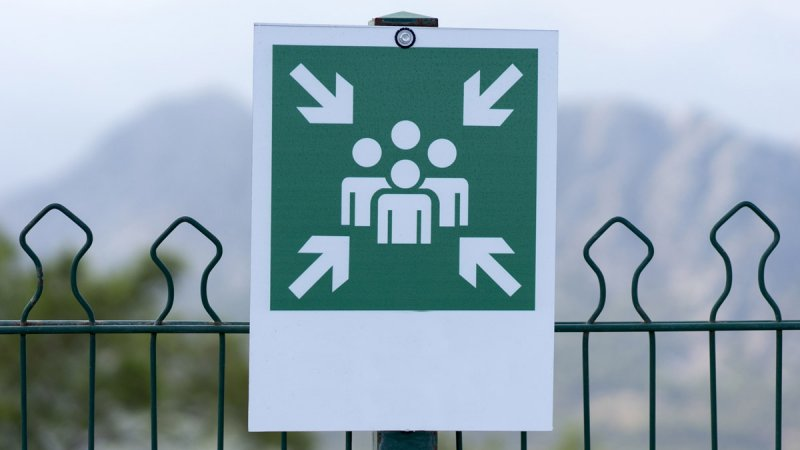If a fire breaks out in your workplace, it’s very important to stay calm. Following the safety procedures in a prompt but composed manner is the best way to ensure everyone gets away from danger as quickly as possible.
– Raise the Alarm
If you are the one to find the fire – no matter how small – it’s vital to raise the alarm quickly. Fires can spread extremely fast, so time is of the essence. Activate the firm alarm as soon as possible and let everyone in the vicinity know there’s a fire nearby so they can get to safety.
Some systems immediately notify the fire service once activated. If this isn’t the case, make sure they are called quickly.
– Evacuate the Premises
Everyone in the workplace should immediately begin the evacuation procedure, without stopping to collect any belongings. If there is any potentially hazardous equipment running, it should be switched off by someone trained in its use. Lifts shouldn’t be used in the event of a fire. If safe and possible, the last person through each door should close it behind them to slow the fire’s progress, and windows should be closed as well.
Follow your assigned escape route if possible. If it’s blocked, make your way to another fire exit. Only attempt to put out the fire yourself if it’s small, blocking your exit, and you have been trained to do so, as should be the case with fire wardens. Mistakes such as using the wrong fire extinguisher can make matters worse so don’t attempt this if you haven’t got the appropriate training.
– Get to an Assembly Point
Once away from the affected building, conduct a head count. It’s best if a fire marshal is available to do this, but if not it can be done by one person from each room or department, then once again to account for everyone throughout the building to make sure nobody is missed. Remember to include any visitors who may have been attending meetings at that time.
Don’t re-enter the building until the fire service have confirmed it’s safe to do so.
If You’re Trapped
If your evacuation routes are blocked and there’s no alternative way to exit the building, make your way to a room with a window.
If you’re on the ground floor, it may be possible to safely escape through the window. Close the door and try to prevent any smoke from entering the room by blocking off the gaps with materials such as clothing. Call 999 immediately.
Should your clothing catch fire, use the “stop, drop and roll” technique: drop to the ground and roll around. This is the most effective way of smothering the flames.

Be Prepared: Before a Fire
If a fire breaks out, it can be a very shocking experience that comes out of the blue on a normal workday. Familiarising yourself with all of the relevant procedures beforehand and learning about fire safety can lessen panic, because you’ll be more familiar with what you need to do in these circumstances. Regular fire drills are an important way to make sure the evacuation procedure is always at the forefront of people’s memories.
– Know Your Exits
Make sure you know your ideal route to your Assembly Point in advance, so in an emergency situation you know exactly where to go.
– Know Your Evacuation Procedures
Pay attention during fire drills and remember the procedure.
– Know Your Fire Wardens
If your workplace has a fire warden or a team of them, be aware of which colleagues hold this position. Often, in an emergency, they will be wearing high visibility clothing, but this is not always the case.
– Be Aware of Mobility Issues
People whose mobility restrictions make it harder for them to reach safety in case of a fire should develop a PEEP (Personal Emergency Evacuation Plan). This also applies to people with sight and hearing impediments. For employees with temporary issues, such as those in late term pregnancy or with broken limbs, a temporary PEEP should be devised.
The PEEP should be developed with the help of your line manager and reviewed regularly.
Workplace fires are not situations anyone wants to face in their working life. To get the best outcome, make sure you’re aware of your workplace’s fire policy and trained in fire safety; stay calm under all circumstances and follow your company’s evacuation procedure in an orderly manner. Make sure all colleagues and visitors with limited mobility can get to safety as soon as possible.








